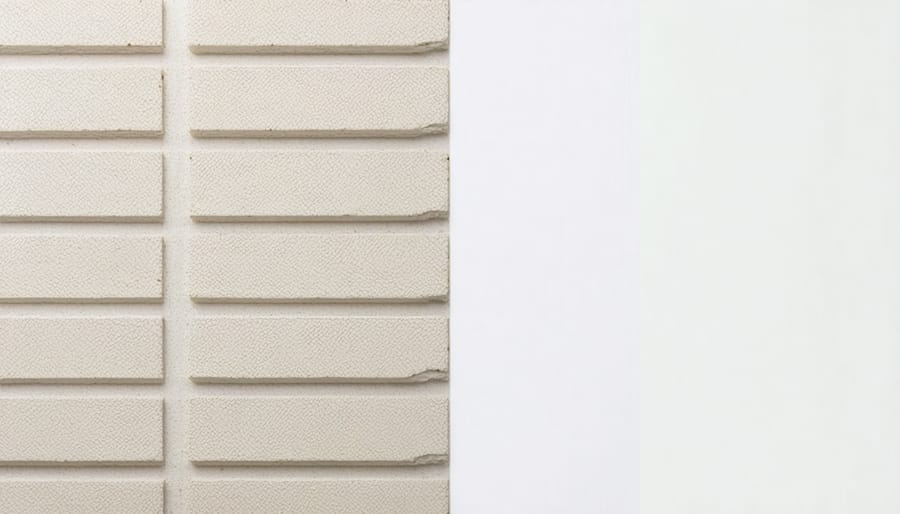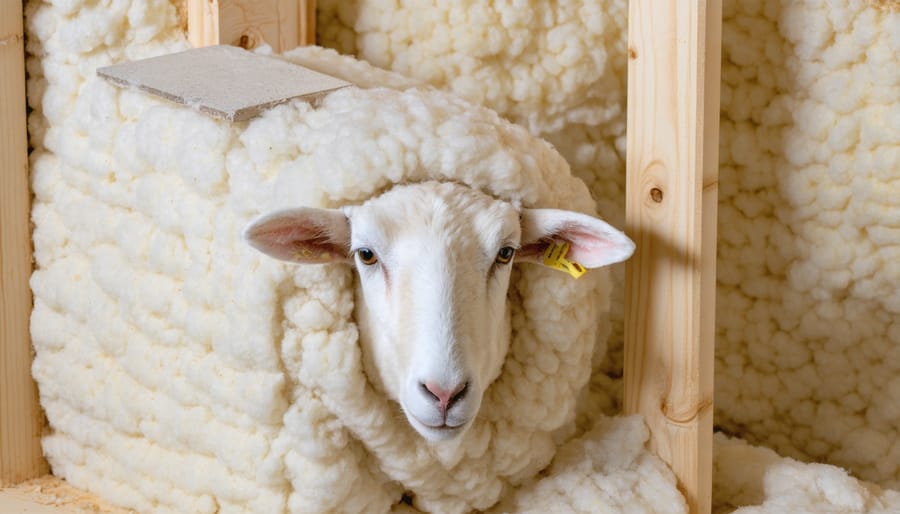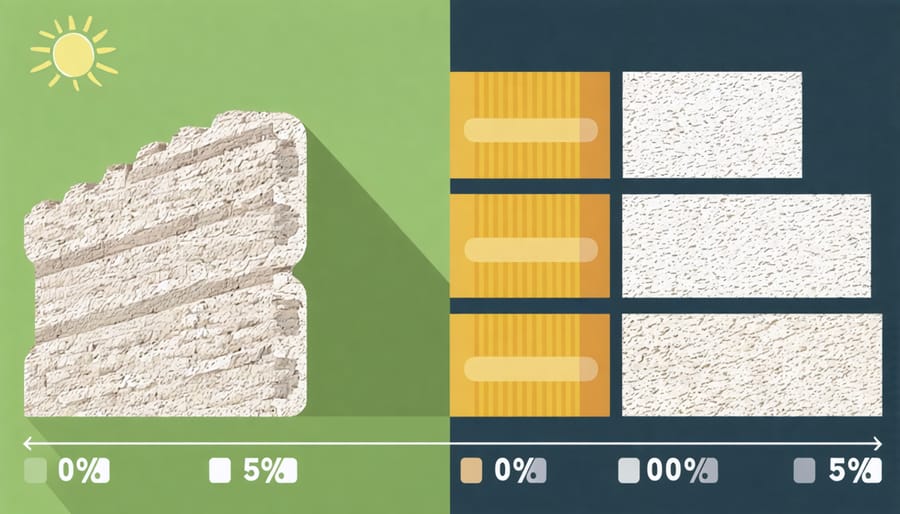
These Natural Insulation Materials Cut Energy Bills While Saving the Planet
Transform your home’s environmental impact with eco-friendly insulation that helps boost energy efficiency while protecting our planet. Natural insulation materials like recycled denim, sheep’s wool, and cellulose aren’t just sustainable alternatives—they deliver superior temperature regulation and sound dampening properties compared to traditional fiberglass. These innovative solutions slash heating and cooling costs by up to 30% while reducing your carbon footprint through materials that would otherwise end up in landfills.
Modern eco-friendly insulation options combine centuries-old wisdom with cutting-edge technology, offering remarkable R-values without the harmful chemicals and irritants found in conventional products. From cork panels harvested sustainably from living trees to mushroom-based materials that grow into their final form, today’s green insulation solutions prove that environmental responsibility doesn’t mean compromising on performance or comfort.
Whether you’re building new or upgrading existing spaces, choosing eco-friendly insulation represents a smart investment in both your property value and our planet’s future, with benefits that extend far beyond basic temperature control.
Why Traditional Insulation Falls Short

Hidden Costs of Conventional Materials
Traditional insulation materials often come with hidden costs that extend far beyond their initial price tag. While these conventional options might seem cost-effective at first, they can significantly reduce your home’s environmental impact in negative ways. Fiberglass and foam-based insulation products typically require extensive energy for manufacturing, release harmful chemicals during production, and often end up in landfills where they can take centuries to decompose. These materials may also contain formaldehyde and other volatile organic compounds (VOCs) that can affect indoor air quality and potentially impact health over time. Moreover, as energy costs continue to rise, traditional insulation materials might not provide the same level of efficiency as newer, eco-friendly alternatives, leading to higher heating and cooling bills. When factoring in potential health-related expenses and environmental cleanup costs, conventional insulation materials could end up being more expensive in the long run than their sustainable counterparts.
Health Considerations
When considering insulation materials, health and safety should be top priorities for your home. Traditional fiberglass insulation can release tiny glass particles that may irritate skin, eyes, and airways during installation. Some older insulation materials might even contain harmful substances like asbestos or formaldehyde, which can pose serious health risks.
In contrast, eco-friendly options tend to be safer for both installers and residents. Natural materials like sheep’s wool, cotton, and cellulose are generally free from harmful chemicals and don’t release irritating fibers. Hemp and cork insulation are particularly safe choices, as they’re naturally resistant to mold and don’t off-gas toxic substances.
However, it’s essential to ensure proper installation of any insulation material to prevent moisture buildup, which can lead to mold growth. When choosing your insulation, look for products with low VOC emissions and third-party health certifications to ensure the safest possible living environment.
Natural Insulation Materials That Actually Work
Cork: The Renewable Wonder Material
When it comes to natural insulation materials, cork stands out as a remarkable option that’s been gaining popularity among eco-conscious homeowners. Harvested from the bark of cork oak trees without harming them, this renewable resource offers exceptional insulating properties while maintaining a minimal environmental footprint.
Cork insulation boasts an impressive R-value comparable to traditional materials, but with added benefits that make it a smart choice for modern homes. It’s naturally fire-resistant, water-resistant, and acts as an excellent sound barrier. Perhaps most importantly, cork is completely biodegradable and can be recycled at the end of its life cycle.
What makes cork particularly appealing is its versatility. It can be used in walls, floors, and ceilings, and comes in various forms including boards, granules, and spray-on applications. The material’s natural resistance to mold, mildew, and pests means you won’t need harmful chemical treatments to maintain its effectiveness.
While cork insulation typically costs more upfront than conventional options, its durability and longevity often make it cost-effective in the long run. Many homeowners appreciate that it’s hypoallergenic and doesn’t release harmful volatile organic compounds (VOCs), contributing to better indoor air quality.
Installation is relatively straightforward, making it suitable for both professional contractors and ambitious DIY enthusiasts. The material is lightweight, easy to cut, and can be installed without special protective equipment.
Sheep’s Wool: Nature’s Perfect Insulator
When it comes to natural insulation materials, sheep’s wool stands out as one of nature’s most remarkable solutions. This renewable resource offers exceptional thermal performance while maintaining breathability in your home. Unlike synthetic materials, wool fibers can absorb and release moisture without compromising their insulating properties, helping to regulate humidity levels naturally.
Installing wool insulation is surprisingly straightforward and safer than handling traditional materials. The fibers come in batts or rolls that can be easily cut to size and fitted between wall studs, floor joists, or roof rafters. What makes wool particularly appealing is that it doesn’t require protective gear during installation – no masks or gloves needed – as it’s free from harmful chemicals and irritants.
One of wool’s most impressive features is its natural fire resistance. The fibers won’t burn; instead, they’ll smolder and self-extinguish, adding an extra layer of safety to your home. It’s also naturally resistant to mold and mildew, thanks to lanolin, a natural oil present in wool fibers.
While the upfront cost might be higher than conventional insulation, wool’s durability makes it cost-effective in the long run. It can last for decades without losing its insulating properties and won’t settle or compress over time. Plus, at the end of its life cycle, wool insulation is completely biodegradable, making it a truly sustainable choice for environmentally conscious homeowners.

Recycled Denim: From Jeans to Walls
That old pair of jeans in your closet could be the key to keeping your home cozy and eco-friendly. Recycled denim insulation transforms worn-out jeans and other cotton textiles into an effective, sustainable insulation material that’s catching on with environmentally conscious homeowners.
Made from approximately 80% post-consumer recycled cotton fibers, denim insulation offers similar thermal performance to traditional fiberglass, with an R-value ranging from R-13 to R-30. But unlike fiberglass, it’s free from harmful chemicals and doesn’t require protective gear during installation.
The manufacturing process is surprisingly simple: old denim and cotton materials are collected, shredded, and treated with a natural fire retardant (usually borates). The fibers are then formed into batts or loose-fill insulation that’s easy to handle and install. The blue color of recycled denim insulation serves as a cheerful reminder of its previous life as someone’s favorite pair of jeans.
Beyond its excellent thermal properties, denim insulation excels at sound dampening, making it ideal for home theaters, music rooms, or between floors. It’s naturally resistant to mold and pests, and because it’s made from cotton, it’s completely safe to touch and won’t cause skin irritation or respiratory issues during installation.
While the upfront cost is higher than traditional insulation, many homeowners find the environmental benefits and improved indoor air quality worth the investment.
Hemp and Straw: Agricultural Solutions
Hemp and straw have emerged as revolutionary agricultural solutions in the eco-friendly insulation market. These renewable materials offer excellent thermal performance while significantly reducing your home’s carbon footprint. Hemp insulation, made from the stalks of industrial hemp plants, provides outstanding moisture control and naturally resists mold and pests. It’s particularly effective in maintaining consistent indoor temperatures year-round, with thermal properties comparable to traditional fiberglass insulation.
Straw bales, typically sourced from wheat or rice farming, have been used for centuries and are making a strong comeback in modern sustainable construction. When properly installed and sealed, straw bale insulation can achieve impressive R-values between R-30 and R-50, making them highly effective in both hot and cold climates.
Both materials are completely biodegradable and can be sourced locally in many agricultural regions, reducing transportation emissions. Hemp insulation comes in convenient batts or rolls, making installation similar to conventional materials, while straw bales require specific construction techniques and are best suited for new builds or major renovations.
The cost of hemp insulation is currently higher than traditional options, but prices are becoming more competitive as production scales up. Straw bales, on the other hand, are often more affordable, especially in farming communities. Both options offer long-term savings through excellent energy efficiency and durability, lasting decades when properly maintained.
Installation Tips and Cost Considerations
DIY vs Professional Installation
While many eco-friendly DIY projects can be tackled by homeowners, insulation installation requires careful consideration of your skill level and the complexity of the job.
Simple projects like installing rolls of wool insulation in accessible attic spaces or adding loose-fill cellulose to wall cavities through existing access points can be managed by experienced DIYers. These tasks typically require basic tools, proper safety equipment, and careful attention to manufacturer guidelines.
However, professional installation is strongly recommended for:
– Spray foam applications
– Whole-house retrofits
– Situations involving electrical wiring or complex ventilation systems
– Projects requiring specialized equipment
– Cases where building codes must be carefully considered
Professional installers bring expertise in proper material selection, moisture management, and air sealing techniques. They understand local building codes and can ensure your insulation meets safety standards and performs optimally. They also carry proper insurance and warranties for their work.
Cost-wise, DIY installation can save 40-50% on labor expenses. However, these savings should be weighed against potential risks and the time investment required. Improper installation can lead to reduced efficiency, moisture problems, or even structural damage – issues that could cost more to fix than the initial savings.
Consider starting with smaller, less critical areas if you’re determined to DIY. For comprehensive insulation projects, working with certified professionals will ensure the best long-term results for both your home’s efficiency and environmental impact.
Cost Comparison and ROI
When comparing eco-friendly insulation options to traditional materials, the initial investment might seem higher, but the long-term benefits often justify the cost. Natural insulation materials like cellulose, wool, or cork typically range from $0.85 to $2.50 per square foot, compared to traditional fiberglass at $0.65 to $1.20 per square foot.
However, the real value becomes apparent when you consider the lifetime savings. Eco-friendly insulation can help you save on energy costs by up to 30% annually, thanks to superior thermal performance and longer lifespan. Most natural insulation materials last 50-75 years, compared to synthetic options that may need replacement after 20-30 years.
Let’s break down a typical scenario for a 1,500-square-foot home:
– Initial installation cost (eco-friendly): $2,250-3,750
– Initial installation cost (traditional): $975-1,800
– Annual energy savings: $300-450
– ROI timeline: 4-7 years
Additional financial benefits include:
– Increased property value (3-5% on average)
– Potential tax incentives and rebates
– Lower maintenance costs
– Reduced carbon footprint
While the upfront investment is higher, eco-friendly insulation typically pays for itself within 5-7 years through energy savings alone. Factor in the environmental benefits and longer lifespan, and it becomes a smart financial decision for conscientious homeowners looking to make a lasting impact.

Choosing eco-friendly insulation is more than just a trend – it’s a smart investment in both your property and our planet’s future. By opting for sustainable materials like recycled denim, cork, sheep’s wool, or cellulose, you’re creating a healthier living environment while reducing your carbon footprint. These natural alternatives not only match or exceed the performance of traditional insulation but also offer unique benefits like improved air quality, moisture management, and sound dampening properties.
The financial advantages are equally compelling. While the initial investment might be slightly higher, eco-friendly insulation typically pays for itself through reduced energy bills and increased property value. Many homeowners report energy savings of 20-30% after switching to sustainable insulation options, making it a wise long-term investment.
Installation is becoming increasingly accessible, with many eco-friendly materials designed for straightforward DIY application. Professional installers are also becoming more experienced with these materials, offering competitive installation rates compared to traditional options.
Perhaps most importantly, choosing green insulation contributes to a more sustainable construction industry and helps combat climate change. Every home that switches to eco-friendly insulation reduces landfill waste and decreases the demand for environmentally harmful materials.
As we look toward a more sustainable future, eco-friendly insulation stands out as a practical, effective solution for both residential and commercial properties. Whether you’re building new, renovating, or simply upgrading your insulation, choosing environmentally conscious materials is a decision that benefits your comfort, your wallet, and our planet. Make the switch today and join the growing movement toward sustainable building practices.
